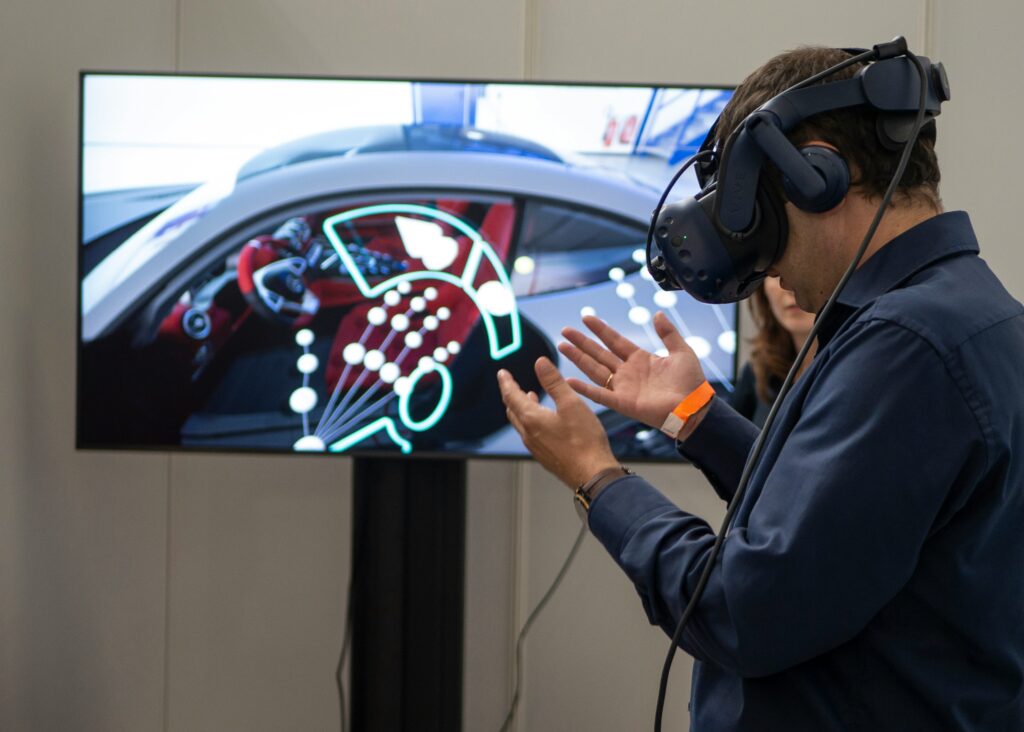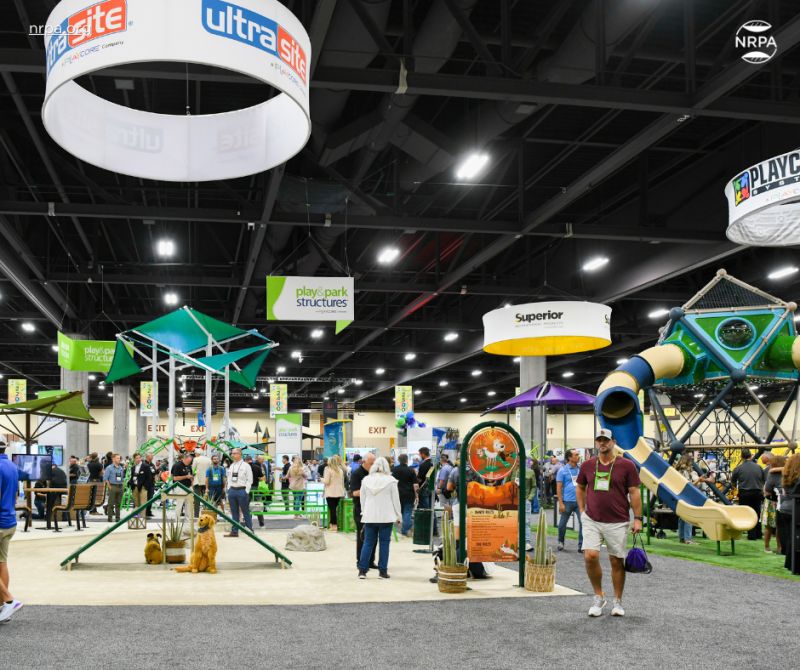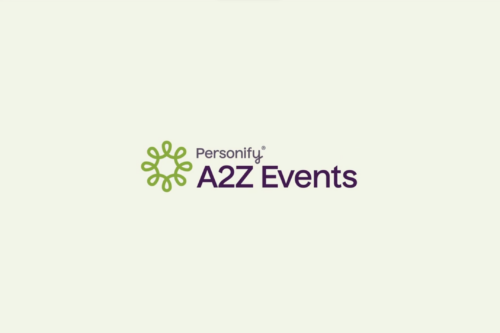Planning a spectacular event requires you to think beyond logistics and speakers. You also need to consider the activities you will have planned for your attendees so that you keep them engaged. The impression people have of your event and how interested they are in your material will have lasting impacts on your ROI and your ability to grow your business through your event planning.
Creating interactive, interesting activities to occupy your attendees can sound exhausting, though. Fortunately, we have compiled a list of 10 types of activities you might want to consider that can help you power your event.
Let’s look through our list of 10 creative, interactive event ideas to keep your attendees involved throughout your event.
1. Interactive Workshops
Interactive workshops are a great place to get started. They offer you a variety of activities you can organize that offer your attendees immediate value and will drive interest.
Hands-On Learning Experiences
Consider including hands-on learning experiences. People appreciate workshops where they can try out different product options, learn new skills, and otherwise gain additional value during your event.
Learning can take a variety of different formats. If you have software releasing a new version, you might offer a sneak peek. If you offer an art-related service, you might offer an art class.
Collaboration Opportunities
If your event fits nicely with larger projects or case studies, you might give your attendees opportunities to collaborate on these types of activities. Your teams might participate in a workshop that lets them trial a particular solution to a common pain point and then contribute to the case study, for example.
2. Live Polling and Q&A Sessions

Live polling and Q&A sessions can be great opportunities for attendees to engage directly with speakers and other experts.
Real-time Feedback
During presentations, offering polls can help your speakers gauge audience opinions and reactions. This helps them create more tailored presentations and gives the audience the chance to feel as though they can interact with the industry leaders.
Engaging Q&A
Q&A sessions also give participants personalized time with leading industry experts and will intrigue many attendees. Let people know ahead of time about the coming session and offer them ample opportunities to submit questions before it starts. You might accept questions through your event app or at dedicated areas throughout the event. Encourage people during the talk to ask questions as well to encourage further participation.
3. Gamification Elements
Everyone likes to play, which is what makes gamification strategies so popular.
Points and Rewards Systems
Rewards and point systems are a great way to get started. Design different quizzes or challenges to highlight throughout the event that encourage engagement. You can give people points for submitting photos during your event, submitting questions to presenters, or participating in workshops, for example. Winners who accumulate the most points might go home with a special prize, such as event-branded merchandise or gift certificates to popular businesses.
Team Competitions
Team competitions take your gamification to the next level and create a fun atmosphere. You can form teams based on seating arrangements, companies, or networking arrangements. Then let the groups compete together to finish different challenges and earn points collectively. This also gives people more opportunity to get to know each other.
4. Immersive Technology Experiences

Technology can create immersive experiences that will take your interactive activities even further.
Augmented Reality (AR) Features
Use augmented reality to build interactive displays that enhance the user experience. People can navigate around the AR setup, find features and experiences that matter most to them, and receive personalized introductions to the display theme.
Virtual Reality (VR) Stations
Virtual reality creates fascinating immersive experiences that will amaze your attendees. At your event, you can use VR stations to offer themed experiences or new ways to interact with your brand and services, for example. Let people participate in interactive presentations, go through training simulations, or experience how a product or service might fit with their needs.
5. Networking Activities
People attend events to network. They appreciate the opportunities to engage with other attendees and build their professional connections.
Speed Networking Sessions
Incorporating speed networking sessions, where people are matched with other attendees for quick chats, can be a fun way to get started. With speed networking, people can get to know a variety of different people attending your event, with whom they can later follow up to continue conversations after the activity finishes. The set up greatly increases the number of fellow attendees people meet.
Interactive Icebreakers
Although people often groan when they hear about icebreakers, when these activities are well planned, they can be positive contributions to your event. You might have people work through challenges where they have to find things in common with other participants, describe their first jobs, or fill in human bingo cards– where they have to find attendees who fit certain criteria to fill in their sheet. All these activities can help people feel more comfortable with each other and find some common ground that will get their networking off to a good start.
6. Creative Attendee Feedback Mechanisms
Interactive strategies to solicit attendee feedback will let people know you care about their opinions and experiences while helping you perpetually improve your events.
Interactive Feedback Stations
You might set up kiosks or other booths throughout the event space where people can participate in surveys or polls and otherwise offer feedback on your event and activities. Interactive stations can make this event more appealing for participants.
Digital Surveys
Mobile apps can also get your requests for feedback directly into the hands of your participants. Use your mobile app to ask people for feedback on your event throughout the activities. You can create participant surveys and polls, and since you use the app, you can get it to all the relevant attendees at once, increasing the chances of them answering.
7. Thematic Photo Booths
People love to take photos; pictures make excellent souvenirs to remember fun adventures and activities. Have some fun as you design photo-taking opportunities for your event.
Customizable Backdrops
Consider creating themed photo booths with customizable backdrops so people can take creative photos of themselves. Examine the theme of your event, the type of industry you work in, and the common interests among your attendee demographics. This can help you brainstorm some booth themes. For example, if you feature outdoor adventures, your slots might have backdrops that focus on major nature monuments or different outdoor experiences like hiking and camping.
When you incorporate these themes, the pictures become even more popular for social media. As people share their photos, they also help promote your event and brand.
Unique Props
Similar to the customized backdrop, you can also incorporate unique props throughout the event that also align with your theme and brand. You can work off ideas similar to the photobooth backdrops. If your brand focuses on software of the future, you might create a ‘futuristic’ environment with your props, which will also encourage photos and sharing on social media.
8. Storytelling Sessions
People remember information they hear through stories. Incorporating storytelling sessions into your event can not only keep your attendees engaged but it can also help them remember what they hear and take away more value from your event.
Personal Stories Sharing
Opportunities to share personal stories can take many different formats. You might incorporate them into your icebreaker sessions or networking activities, for example. In any situation, encouraging people to share about their professional lives, hobbies, and development gives people opportunities to build connections.
Expert Storytellers
As you look at your list of presenters, you might also consider how you can incorporate master storytellers into the lineup. Compelling stories are a great way to connect with audiences and help people feel more invested. Great storytellers for your event can approach this task in a few different ways. You might have presenters who tell compelling stories from their own lives that center on desirable characteristics or align with your event’s theme. Speakers can also tell stories from clients or customers who use their products in a compelling way that helps to capture the full potential of their brand.
9. Scavenger Hunts

From childhood, scavenger hunts have remained a popular group activity. They require creativity and perseverance while also adding a fun element of competition.
Foster Exploration
Use your scavenger hunts to encourage people to explore the venue and all the different components you have planned. Attendees might have clues that lead them to various exhibit booths or encourage them to find all the different spaces– such as the kitchen, presentation halls, and networking spaces– so people feel more confident navigating there later.
Collaboration and Competition
When you design your scavenger hunt to run in teams, you also can promote teamwork and some friendly competition to invigorate your attendees and help them get to know each other. You have the choice of designing teams based on companies, so that people often work with those they already know, or through randomization so that the activity can also serve as a networking component. In either scenario, teammates will become better acquainted as they work their way through the lists of clues, which will help them build relationships throughout the rest of the event. Inspiring a little friendly competition through on-brand prizes at the end can encourage people to become more invested in the activity and help everyone relax a bit and enjoy themselves.
10. Live Demonstrations and Performances
Live demonstrations and performances not only add value to your event, but they also provide sources of entertainment and draws to encourage people to attend.
Engaging Product Demos
Brands commonly use space during events to showcase their products or to offer sponsors the chance to demonstrate their own capabilities. Demonstrations provide first-hand experiences for attendees to see how different products work so they can start to visualize how that might help them with their own pain points. Attendees appreciate these demonstrations and brands love to conduct them because of the potential to bring in leads. Altogether, this makes these offerings a win-win.
Entertainment Performances
In addition to live demonstrations, you might also schedule some live performances for particular times throughout the event. For example, you might have quiet live music that plays during a meal time or an energetic performance that gets people moving or laughing after the main events of the day finish. However you plan your performances, people will appreciate you injecting some energy into the event. Consider your audience and their likely interests to help you plan entertainment that will appeal to large numbers of your attendees.
Conclusion: Developing Interactive Event Ideas
When you bring people to your event, you want to capture their attention with exciting and interactive elements that will encourage engagement and give them positive impressions of your brand and your sponsors’ brands. When you give people opportunities to interact with each other and your organizers, you can achieve these goals.
As you start organizing your next event, consider this list of interesting and creative elements you can incorporate into your itinerary. See which ones will fit best with your event theme and brand so you can build a memorable event your attendees will enjoy.










